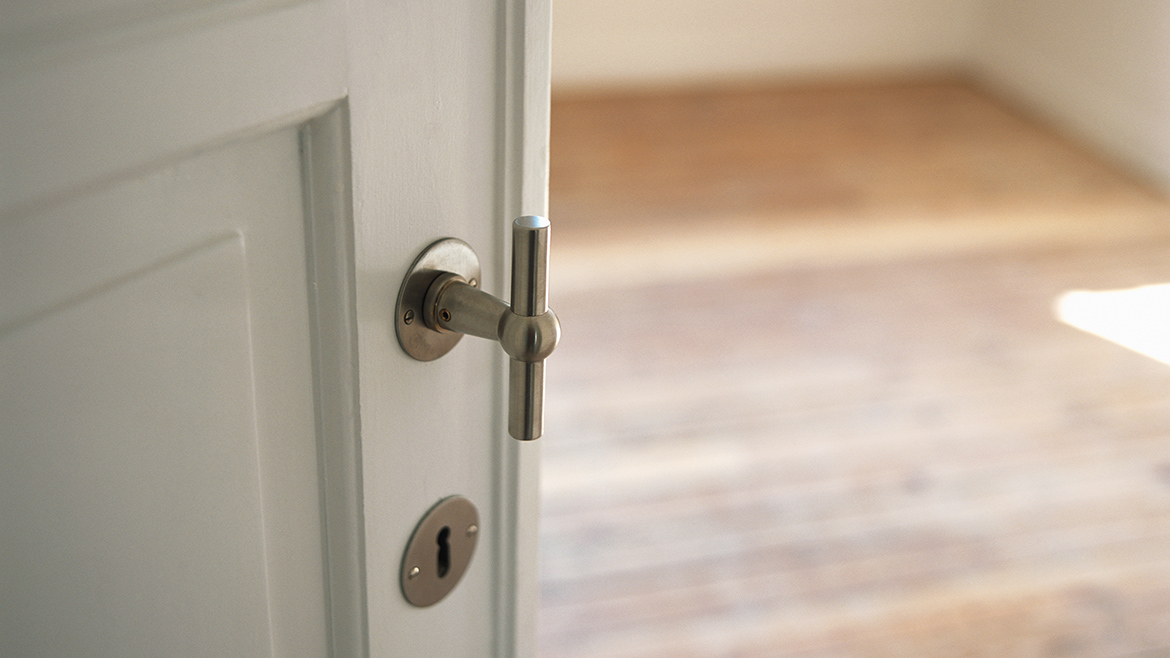Building With Diligence


The Columbia Housing Authority rebuilds public housing.
Since 2013, the Columbia Housing Authority has had a master plan in place to rehabilitate its 719 affordable housing units and add a property for homeless veterans. Thanks to federal funding and local financing from Providence Bank and Central Bank of Boone County, 242 units are currently under construction throughout Columbia.
The Bear Creek and Stuart Parker housing projects are being rehabilitated, making the units more modern and energy-efficient. Columbia Housing Authority CEO Phil Steinhaus says some of the properties had not been updated in 50 years and are in need of updates to everything.
Local Help
Providence Bank is lending $9.2 million to finance the renovation of the 84-unit Stuart Parker housing project. Senior Vice President Eric Morrison says financing the project is a win for both the bank and the city of Columbia.
“We are happy to be a part of this,” Morrison says. “We want to be a strong partner with the CHA. This is significant for the community.”
Morrison says this is the first time Providence Bank has won one of the bids to help with CHA renovations, and he hopes there are more to come.
“The goal is to upgrade all the [CHA] units,” he says. “Some of the properties have not seen renovations. There are so many great community banks being part of the community project.”
Central Bank of Boone County is assisting with the financing of two other projects currently underway: 78 units at the Bear Creek project and the construction of Patriot Place, on the site of the former the Deluxe Inn, which will be a home for displaced veterans (see story, page 56). The CHA says it will take about $4,000 to furnish each unit at the complex. Veterans will pay 30 percent of their gross household income for rent, and the rest, including utilities, will be completely supported through funds from the Veterans Affairs Supportive Housing program, or VASH. If residents have no income, the VASH voucher will cover everything.
Chris Rosskopf, VP of Commercial Banking at CBBC says their involvement in the rehabilitation of the two projects gives back to the city of Columbia.
“These projects fill the needs of two distinct demos,” he says, “the lower income that need affordable housing and the veterans.”
Ending the Projects
The local banks fund a portion of the renovations, with the rest coming from federal programs that began after World War II and have seen evolutions since the 1970s. Early public housing programs confined all the units to a specific area of a community, creating “the projects.” In the 1970s, the Housing Choice Voucher Program was put into action with the goal to disperse public housing to many areas within a community. Steinhaus says the redemption behind the voucher system is simple.
“A person can apply for a voucher. When they get one, they then find a location to rent, just like anyone else,” he says. “The landlord agrees to accept the voucher and the tenant pays 30 percent of their household income for rent.”
The CHA voucher program does require the tenant to have specific responsibilities. They must keep up with their portion of the rent, all utilities must be set up under the name of the occupant, and all utility bills are the responsibility of the tenant as well.
Steinhaus says the result of the program is that poverty has become less centralized, giving everyone the opportunity to live in nice communities. In the past, areas with widespread poverty were often a breeding ground for crime and violence.
“The goal is to upgrade all the (CHA) units. Some of the properties have not seen renovations. There are so many great community banks being part of the community project.”
The general public knows the voucher program as Section 8. Some landlords will allow a certain percentage of their units to be part of the voucher program, while others are open to allowing all their units to be rented by voucher recipients. In other instances, properties are built, under strict guidelines, to be affordable housing only for those on the voucher program.
Steinhaus says there are benefits for the builders of these properties. The builder receives tax breaks in the form of the low-income housing tax credit, which is a dollar-for-dollar reduction in the builder’s federal income tax. Investors will purchase some of the tax credits for an equity stake in the project. The result, Steinhaus says, is the builder borrowing less, and after 15 or 20 years, the remainder of the builder’s loan is forgiven. According to a report on the CHA website, the houses have to be “well-constructed, energy efficient, accessible, and dispersed throughout the community.” The caveat to the builder is that the property must rent below market value to qualified low-income renters.
Continuing Renovations
Renovations are large-scale for Stuart Parker Apartments and more minor for Paquin Tower. The Paquin Tower project has not seen a major update since its construction in 1973. It caters to the elderly and residents with disabilities and has 200 units available for rent. The current series of renovations to Paquin Tower includes new appliances, ceiling tiles, and handrails in the bathrooms. Before 2012, the property was not energy efficient. Heat would rise, and to keep the temperature under control, residents on the upper floors had to open windows in winter to let out warm air. A better system was in need, and new geothermal heat pumps were installed in 2012. The pumps take heat from the ground captured in the summer and use it for heating in the winter; cooler air from winter is then captured and used for cooling the units in the summer.
“We replaced the window air conditioning units, installed double pane windows and an energy recovery system,” Steinhaus says. “We also installed an air scrubber and made the building smoke-free.”
The improvements to the project saved more than $100,000 in utility costs within the first year. As a result, similar processes are being implemented in other properties that CHA manages. Steinhaus says a federal stimulus grant in 2008 made the installation of geothermal heating units possible.
The Stuart Parker renovations are more comprehensive, all 84 units have been completely gutted. The former walls were all concrete. As a result, the insulation was poor. Washer and dryer hook-ups are also going to be added. While residents will be responsible for supplying their own washer and dryer, this addition will eliminate the requirement of having to go to the on-property laundry facility.
Steinhaus says porches, patios, and storage sheds will also be added.
The Stuart Parker and Paquin Tower renovations began in January and renovations to all units will be completed by the end of 2017.
The Bear Creek Apartments’ 78 units that CBBC is helping to renovate were built between 1956 and 1963 and, with multi-room units, cater to families. The complex is undergoing a complete overhaul. The improvements will result in better appliances, more energy efficient windows and heat pumps similar to those used in Paquin Tower. CHA examined the possibility of razing the property completely and starting over on the same site. However, it was deemed more cost-effective to gut each property and build on the same foundation and building frame. The Bear Creek renovation project is slated to begin May 1 and be completed by the end of 2017.
The CHA Affordable Housing Strategic Plan has a waiting list for Columbia residents to move into affordable housing. Steinhaus says it’s more than inexpensive housing that draws people to the CHA properties; it’s also the services available to residents. Each property has a resident services coordinator, a person that the residents can turn to as they get settled in their new neighborhood. The CHA also offers a family self-sufficiency program, a five-year plan to help the family become self-sufficient and move into a community not supported by the CHA. This, in turn, enables the CHA to turn the property around and begin helping another member of the community. Other programs include money management programs, youth after-school programs and a food pantry.
Steinhaus recalls a hearing for a potential resident that was coming to Columbia from the St. Louis area.
“She says her sister was in our program and was able to get on her feet, find a job, and buy a house of her own,” he says. “She wanted the same for her family.”
In preparation for construction, Steinhaus says they will not fill vacancies at the property to be worked on. Instead, prospective residents will be placed in another community so no current residents are displaced.
Steinhaus says there are financial benefits to both Providence Bank and CBBC for being local lenders and supporting the projects.
“When (a builder) applies for a low-income tax credit, banks want to see the next 20 years’ business plan,” he says. “They see the plan, and it’s low-risk. They have confidence in the project, and they are a great community partner.”
Morrison wants to increase Providence Bank’s role in the program and continue to invest in the local community.
“Ideally, we would like to see all the properties rehabbed,” he says. “The city of Columbia gets rehabilitated, and all the properties are rented.”
Rosskopf says the CHA has a strong plan in place moving forward.
“We welcome the opportunity to be involved in future projects,” he says. “These [Patriot Place and Bear Creek] are two of the larger projects we have in place. We appreciate the partnership we have here.”
He says the reason the program has been successful is due to the diligence of Steinhaus.
“We are lucky to have Phil in his role,” Rosskopf says. “He is a person who can see the process through, and we are pleased Columbia has him.”


